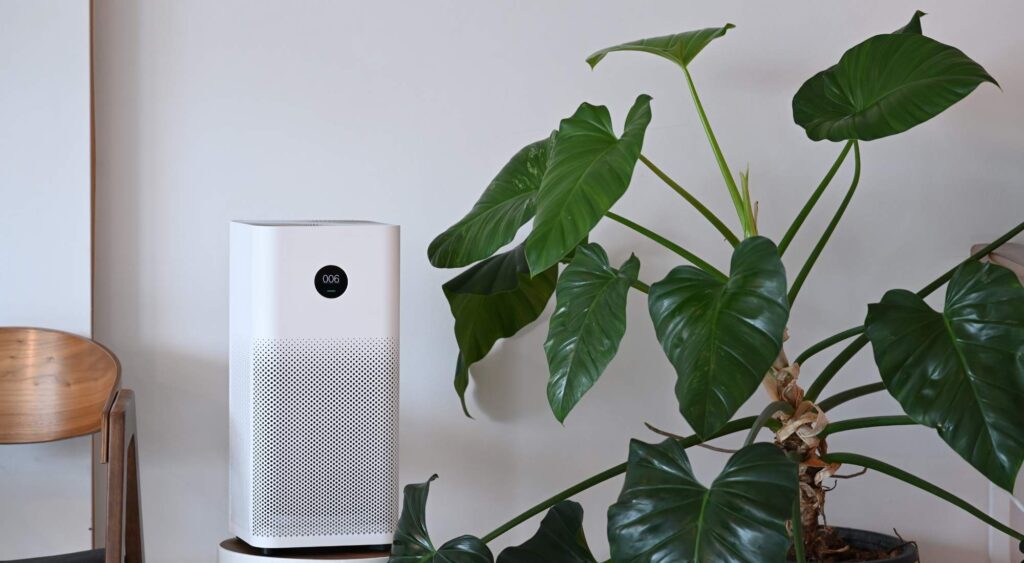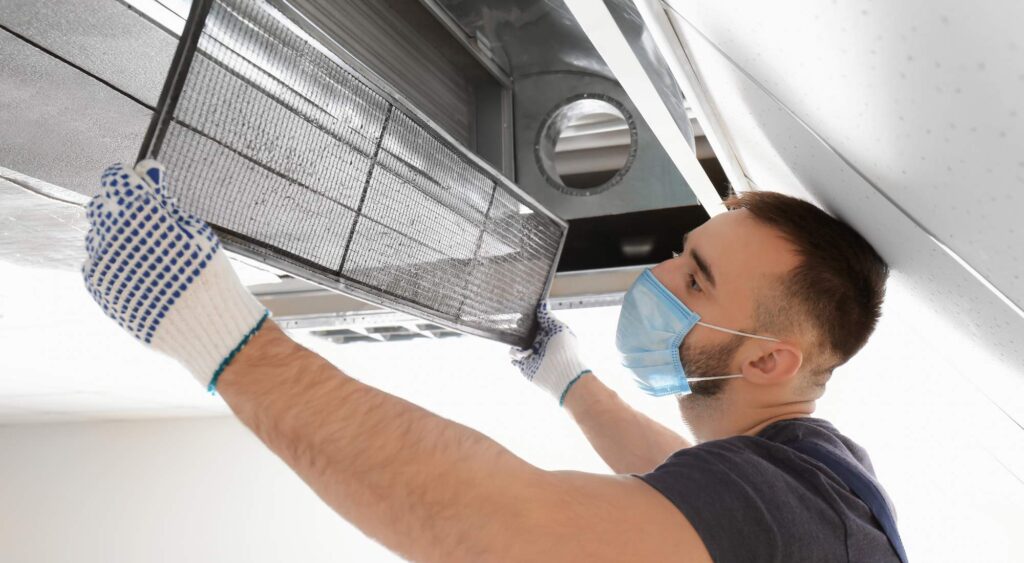How To Improve Air Quality and Reduce Allergens in Your Home
From pollen to dust to mold, allergens hide in unexpected places and produce aggravating symptoms. Air quality control is essential to reducing allergens in your home and ensuring that it’s a safe, healthy place for your family. Fortunately, maintaining good air quality is simple with some practical solutions.
We’ll explain why it’s important to reduce allergens in your home, give you some tips on how to do it yourself, and let you know when to bring in the pros for extra help.
Table of Contents
- Why Is It Important To Reduce Dust and Allergens in Your Home?
- 10 Ways To Reduce Allergens in the Home
- Reduce Allergens in Your Home With Services From AAA Heating and Cooling
Why Is It Important To Reduce Dust and Allergens in Your Home?
Reducing allergens in your home is important because they can make people with asthma and allergies sick, sometimes to the point that it prevents them from doing everyday activities. Illness can be triggered by indoor allergens such as:
- Mold
- Dust mites
- Pet dander
- Cockroaches
- And more
Working to create better air quality in your home can reduce allergy and asthma triggers.
10 Ways To Reduce Allergens in the Home
#1: Use Air Purifiers
Air purifiers come in a variety of sizes. They boost indoor air quality by removing contaminants from your surroundings. Air purifiers trap particles like pet dander, pollen, dust, dust mite feces, mold spores, and volatile organic compounds (VOCs). Some even have the ability to capture bacteria and viruses.
When shopping for an air purifier, look for one that has a HEPA filtration system and does not produce ozone gas. If you already own one, follow the manufacturer’s recommendations regarding filter changes.
#2: Create a Regular Housekeeping Routine
Vacuum your home (including the drapes and furniture) once a week and use a damp towel to dust surfaces. Wash bed linens once a week using hot water, and consider using mite-proof pillow and mattress covers. As you clean your home, inspect it for water leaks around pipes and the refrigerator. Also, look for air leaks, which occur around doors and windows. If you notice any type of leak, fix it as soon as possible.
Regularly clean the bathrooms and kitchen with a solution that kills bacteria and mold spores. As you work in these areas, ensure that the fans work properly. If mold seems to be a problem in the home and the fans recirculate the air or vent it into the attic, consider replacing them with exhaust fans that vent the air outside.
#3: Change Your Window Treatments
Fabric window treatments, like curtains, have the potential to trap dust, pollen, and other allergens. Consider installing blinds or shades or using curtains that you can machine wash.
Blinds and shades are simple to dust once a week using a vacuum brush attachment. If you leave the windows open when the weather is warm, wash the window treatments often.
#4: Take off Your Shoes
Shoes track in up to 40 percent of the contaminants in your home and are often the largest source of dust, according to the University of Georgia. In addition to having a no-shoes policy in your home, set up an entry mat system that has a scraper mat outside the entry door, an absorption mat at the entry of the home, and a finishing mat at the end of the absorption mat.
The scraper mat serves to remove dirt from shoes. The absorption mat further cleans shoes and wicks away moisture. The finishing mat captures any remaining particles and moisture on shoes.
Family members and guests should remove their shoes toward the end of the finishing mat, before entering the main area of your home. Consider placing a shoe storage area in your entryway to encourage compliance and keep things neat.
#5: Prevent Pet Dander
Knowing how to reduce pet allergens in your home is a big part of keeping your air clean. There’s truly no such thing as a “hypoallergenic pet,” so many doctors suggest that people with allergies avoid pets with feathers or fur. However, some animal dander doesn’t have as many allergenic proteins as others and may cause fewer symptoms.
If you do have pets, follow these tips to prevent the spread of their dander in your home:
- Keep pets out of bedrooms.
- Wash pet beds and toys often.
- Bathe and brush your pets often.
- Wear a mask when grooming pets if you have allergies.
- Avoid wall-to-wall carpeting, as these can hold allergens in. Choose bare floors or low-pile rugs instead.
#6: Deal With Cockroaches
According to the American Lung Association:
“Cockroaches can make asthma worse and cause allergic reactions in people who are sensitive. Cockroach allergens can be found in their body parts, saliva, and fecal matter. These tiny particles can become airborne and contaminate the air indoors.”
To help control cockroaches, you should always cover garbage and don’t leave food lying around. Instead of using chemicals to kill them, which may irritate asthma conditions and sinuses, consider using traps, poison baits, or boric acid instead.
#7: Control Temperature and Humidity
Hot and humid homes are often breeding grounds for mold and dust mites. Keeping the temperature between 68-72 degrees with a relative humidity of no more than 50 percent can help keep these allergens at bay.
If your HVAC system is struggling to maintain temperature and appropriate humidity levels, be sure to contact AAA Heating and Cooling to get it checked out.
#8: Reduce Moisture Levels
Besides controlling humidity levels with your HVAC system, there are other ways you can control mold in the home. These include:
- Using humidity monitors
- Using dehumidifiers
- Not running showers for too long
- Limiting the number of houseplants you have
- Fixing any leaks or other damp areas
- Cleaning areas where you see mold immediately and recleaning frequently to keep it at bay (and don’t forget to wear a mask!)
#9: Close Your Windows To Keep Out Pollen
It can be tempting to open those windows when the weather is nice outside, but if it’s pollen season and you have allergies, this is a big no-no. If you really want to open your windows, be sure to check the pollen count and make sure it’s low. Otherwise, it’s best to circulate air in your home using air conditioning or fans.
#10: Schedule Regular HVAC Maintenance
If your home has a heating and cooling system, change its air filter and any filters used in the air vents. Dirty filters no longer serve their purpose and introduce allergens into the home rather than trap them. Follow the manufacturer’s recommendations regarding the frequency of air filter replacements, and set reminders so you don’t forget to perform this important task.
Once a year, schedule a professional HVAC inspection and tune-up. During an inspection, the technician may find a problem that affects the quality of the air in your home or the system’s efficiency and can make the necessary repairs to keep your environment safe.
Ducts with air leaks increase dust and allergen levels in the home. Arrange for a professional to inspect your home’s ductwork every few years or when you notice the following:
- Frequent indoor allergy symptoms in family members
- Excessive dust in the home; or
- Rooms feeling unevenly heated or cooled
If the ducts have mold growth or high levels of dust, schedule a professional duct cleaning.
Reduce Allergens in Your Home With Services From AAA Heating and Cooling
Air quality control takes effort, but is achievable with regular home maintenance and being mindful of the many ways allergens can enter.
If you have concerns about indoor air quality or want to schedule maintenance on your HVAC and duct systems, contact AAA Heating and Cooling. We are a one-stop service for all your home comfort needs, including duct cleaning services and air filtration installations.
Click the button below to request an appointment today.


